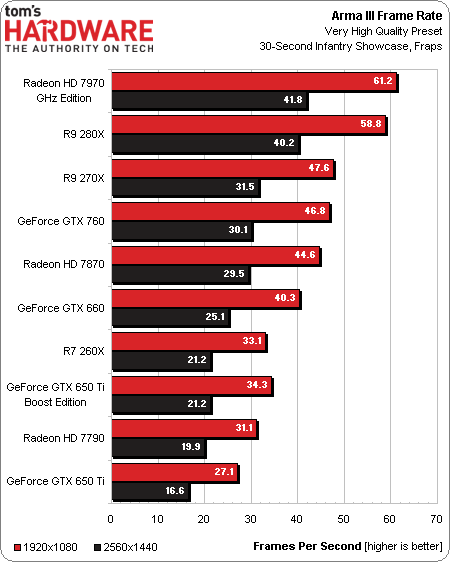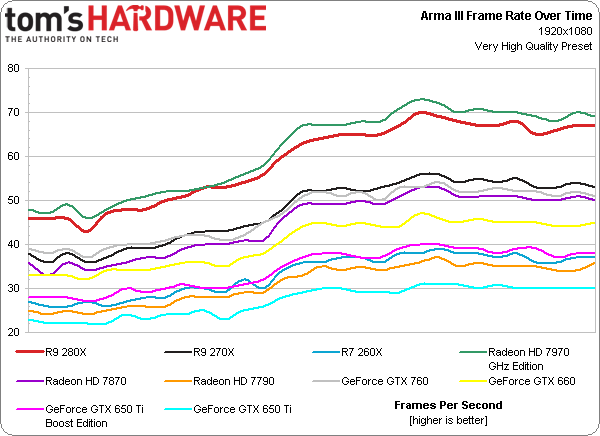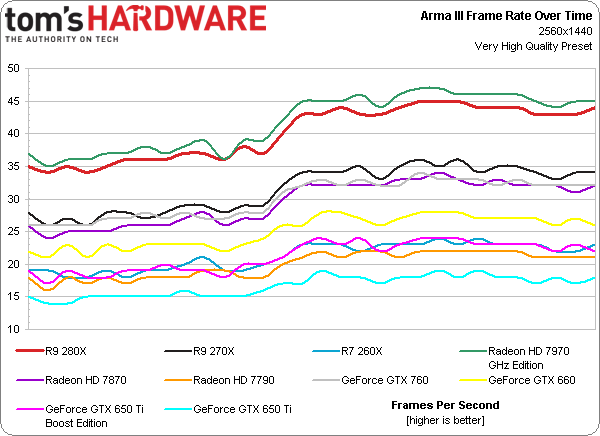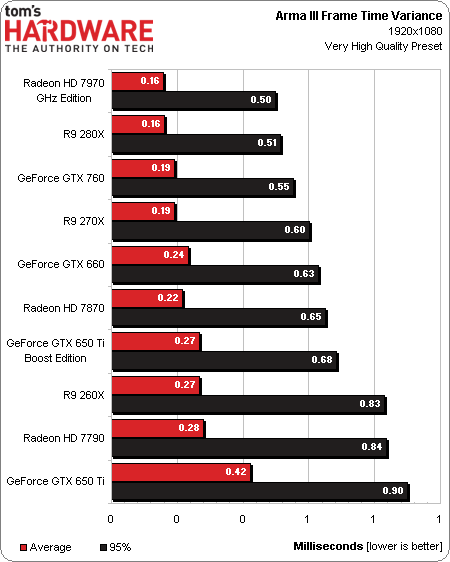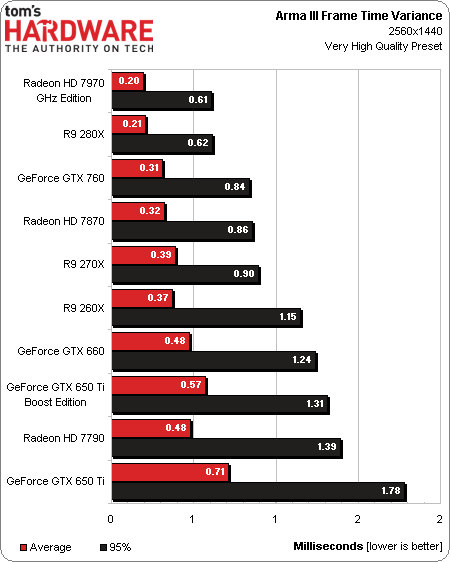AMD Radeon R9 280X, R9 270X, And R7 260X: Old GPUs, New Names
AMD is introducing a handful of new model names today, based on existing GPUs. Do the company's price adjustments make this introduction newsworthy, or will the excitement need to wait for its upcoming Radeon R9 290 and 290X, based on fresh silicon?
Results: Arma III
For each game we’re testing, we need to evaluate three different products. First up is AMD’s “new” R9 280X. As expected, it’s slower than the Radeon HD 7970 GHz Edition, though just slightly. Nvidia’s closest-priced alternative, GeForce GTX 760, sells for $50 less, but even gets beaten by the R9 270X in Arma III. The cheapest 7970 GHz Edition card (as of this writing) sells for $330, so for $30 less, the R9 280X is a good example of AMD’s Tahiti GPU made more attractive.
Stepping down one product category means giving up playable performance at 2560x1440 (at least using Very High quality settings). Nevertheless, AMD’s R9 270X has little trouble outpacing GeForce GTX 760 and the Radeon HD 7870. AMD scores a value win, without question. But with 7870s going for as little as $170, spending $30 more on an R9 270X is a step in the wrong direction, price-wise, for the same Pitcairn/Curacao GPU.
Arma is a great-looking title, and its Very High detail setting is pretty taxing. An average frame rate in the 30s might not be satisfactory at 1920x1080, compelling you to scale back on eye candy (a shame, really). R7 260X won’t change your experience compared to the Radeon HD 7790. The thing is, most 7790s are 1 GB cards. The 2 GB Gigabyte model we bought sells for the same $140 AMD plans to charge for its R7 260X. So, for the same price, you’re getting a slight overclock and TrueAudio turned on. The good news for AMD is that, even after a price drop on Nvidia’s GeForce GTX 650 Ti Boost, its Bonaire-based boards are still a better value. Our Best Graphics Cards For The Money column concurs.
An analysis of frame rate over time at 1920x1080 and 2560x1440 breaks our 10 comparison boards into three distinct groups. Up top, the Tahiti-based offerings appear uncontested by the GeForce GTX 760, which instead competes against $200 Pitcairn-based cards.
Arma is taxing enough that, at 2560x1440, you’re probably going to want a Tahiti-class card. Otherwise, you’re going to spend a fair amount of time under 30 FPS.
In single-GPU configurations, all of these solutions demonstrate low frame time variance. For more on what this measurement includes and how we generate it, check out this page.
Get Tom's Hardware's best news and in-depth reviews, straight to your inbox.
